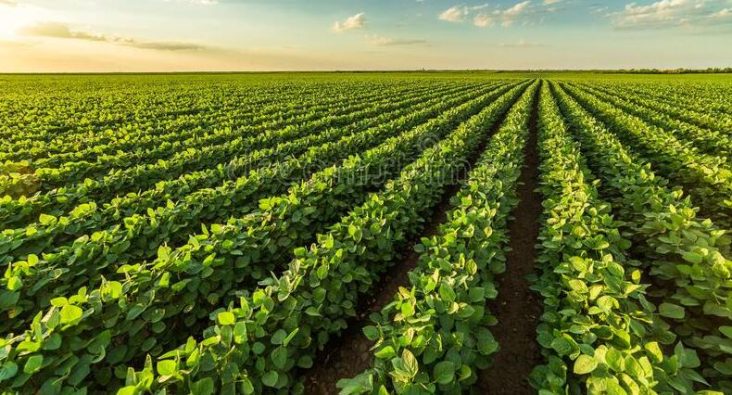Commodity price declines cut into soybean crop profits in 2024
by January 7, 2025 2:28 pm 290 views

Arkansas soybean farmers planted more acres and harvested greater yields in 2024 when compared to 2023, but profit margins still were lower for many producers due to a drop in commodity prices.
About three million acres of the crop were planted last year, a 4% increase, according to the U.S. Department of Agriculture’s National Agricultural Statistics Service (NASS). Farmers averaged 55 bushels per acre, a slight increase, NASS reported. Nearly 166 million bushels were harvested last fall.
“The USDA projection of 55 bushels is in line with what I’ve seen,” said Jeremy Ross, professor and extension soybean agronomist for the University of Arkansas System Division of Agriculture. “Even though it’s a little better than last year, farmers are still hurting because commodity prices have declined, and the expenses are still higher.”
Prices plunged last year due to several factors. During the 2023 growing season prices were about $12.80 per bushel, but that figure dropped to $10 per bushel last year. Global carryover from the 2023 crop, a large crop in South America, and domestic producers increasing acres nationwide diluted commodity markets, S&P Global reported.
“Brazil is also producing more soybeans, and we grew more soybeans than last year,” Ross added. “Equipment prices are up. Inputs are up. Everything is inflated.”
Although every growing year is slightly different due to the weather, Ross said several baseline factors contribute to record-breaking yields for Arkansas soybean farmers. One of them is a contest that began in 1999 and served as an incentive to learn new research-based management practices and try out a few new things of their own.
Despite the low prices, soybean producers continued to push the edge with near record-breaking yields.
The Grow for the Green Soybean Yield Contest is administered by the Arkansas Soybean Association and sponsored by the Arkansas Soybean Promotion Board, with crop management assistance provided by the Division of Agriculture’s outreach arm, the Cooperative Extension Service.
The highest yield in the contest’s first year in 1999 was 76.73 bushels per acre. By 2003, the winning count was 83 bushels. In 2007, the 90-bushel barrier was broken. In 2011, five farmers produced more than 90 bushels per acre, and just a few years later, a couple of farmers reached the 100-bushel-per-acre mark, including Matt Miles in Desha County with 108.7 bushels.
“This year, we had eight new farmers break 100, and close to 40 farmers have broken 100 bushels an acre since the contest began,” Ross said. “Most of their production methods are coming from our recommendations. But based on the information provided to me and the association, there’s nothing dramatic causing the yields. It has a lot to do with planting early and timely applications.
“A lot of these guys are really particular with their management practices. They’re on time with everything,” Ross said. “Timeliness is big. If you’re a week off of fertility, or fungicide, or herbicide, and weeds get out of hand, you can hurt your yields.”
Planting earlier in the year might be a factor for improved crops. During the past few years, Ross said he has noticed more farmers planting at the end of February or early March instead of April or May.
“There’s been a big push to plant a month earlier than 10 years ago because we have data showing it leads up to 10% better production,” said Ross. “It takes farmers proving it to themselves on a few acres.”
Early planting, made possible by a shift in rain and temperature patterns, may assist in avoiding late-season insect problems and possibly outrun some hotter temperatures in July, Ross said. An earlier harvest has also allowed early planters to prepare their fields for the following season when the ground is dry in the fall.
Although the weather at the beginning of the season went well for soybean growers this year, June and July were very dry, and August pushed it to drought conditions.
Three tropical storms birthed by hurricanes hit Arkansas this summer. Row crops were mostly unaffected by Tropical Storm Beryl in early July, but two storms in September — Francine and Helene — did some damage.
Some soybean farmers took a hit on quality since they could not get out in the field to harvest the crop in time. Ross estimates that up to 2% of the state’s crop was affected by storm quality issues. But for the few who did get hit, they got walloped.
“For them, it was a perfect storm scenario where the beans that couldn’t be harvested because of Francine went through harsh conditions,” Ross said. “Beans sat out longer than they should have because they couldn’t get to them. It was significant and detrimental.”
